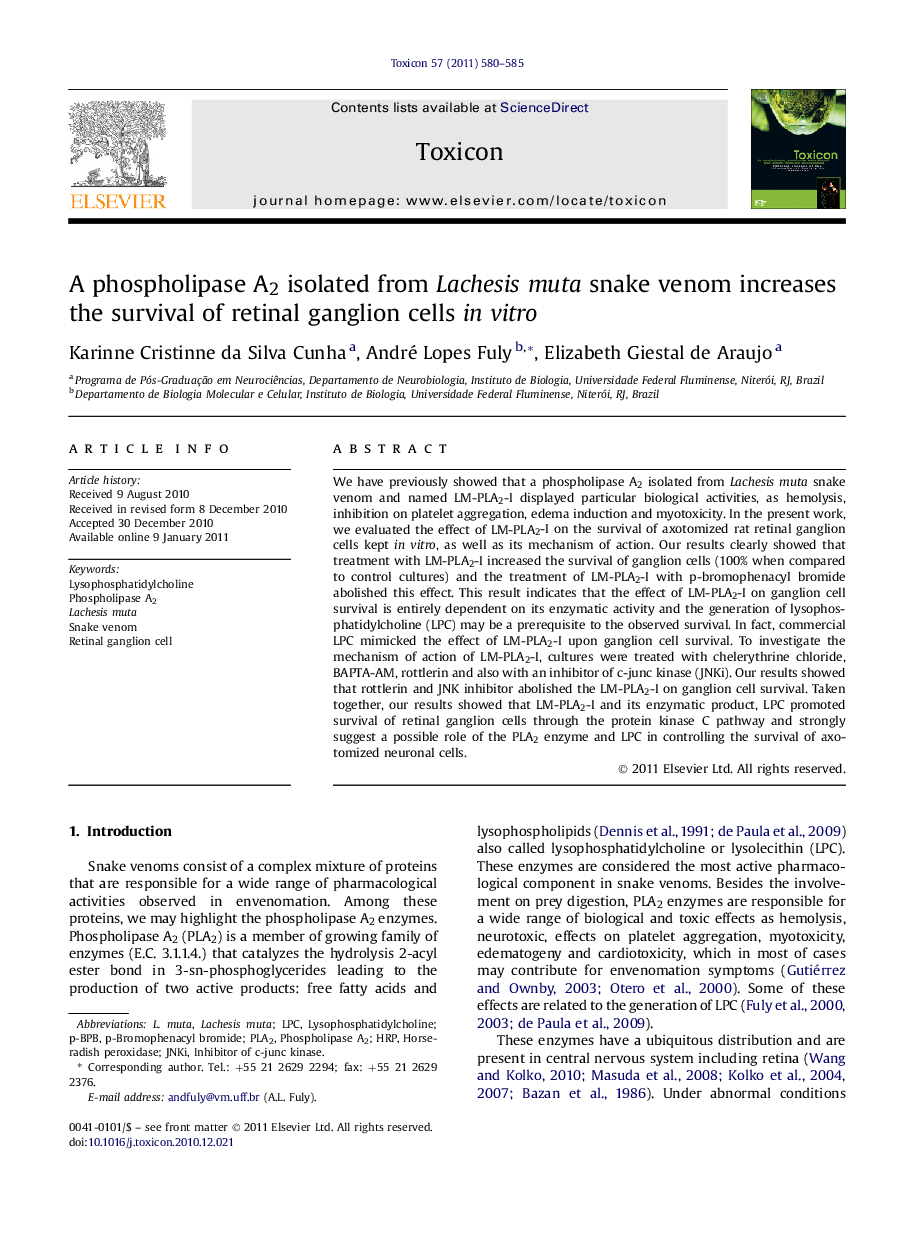| Article ID | Journal | Published Year | Pages | File Type |
|---|---|---|---|---|
| 10880126 | Toxicon | 2011 | 6 Pages |
Abstract
We have previously showed that a phospholipase A2 isolated from Lachesis muta snake venom and named LM-PLA2-I displayed particular biological activities, as hemolysis, inhibition on platelet aggregation, edema induction and myotoxicity. In the present work, we evaluated the effect of LM-PLA2-I on the survival of axotomized rat retinal ganglion cells kept in vitro, as well as its mechanism of action. Our results clearly showed that treatment with LM-PLA2-I increased the survival of ganglion cells (100% when compared to control cultures) and the treatment of LM-PLA2-I with p-bromophenacyl bromide abolished this effect. This result indicates that the effect of LM-PLA2-I on ganglion cell survival is entirely dependent on its enzymatic activity and the generation of lysophosphatidylcholine (LPC) may be a prerequisite to the observed survival. In fact, commercial LPC mimicked the effect of LM-PLA2-I upon ganglion cell survival. To investigate the mechanism of action of LM-PLA2-I, cultures were treated with chelerythrine chloride, BAPTA-AM, rottlerin and also with an inhibitor of c-junc kinase (JNKi). Our results showed that rottlerin and JNK inhibitor abolished the LM-PLA2-I on ganglion cell survival. Taken together, our results showed that LM-PLA2-I and its enzymatic product, LPC promoted survival of retinal ganglion cells through the protein kinase C pathway and strongly suggest a possible role of the PLA2 enzyme and LPC in controlling the survival of axotomized neuronal cells.
Keywords
Related Topics
Life Sciences
Biochemistry, Genetics and Molecular Biology
Biochemistry, Genetics and Molecular Biology (General)
Authors
Karinne Cristinne da Silva Cunha, André Lopes Fuly, Elizabeth Giestal de Araujo,
